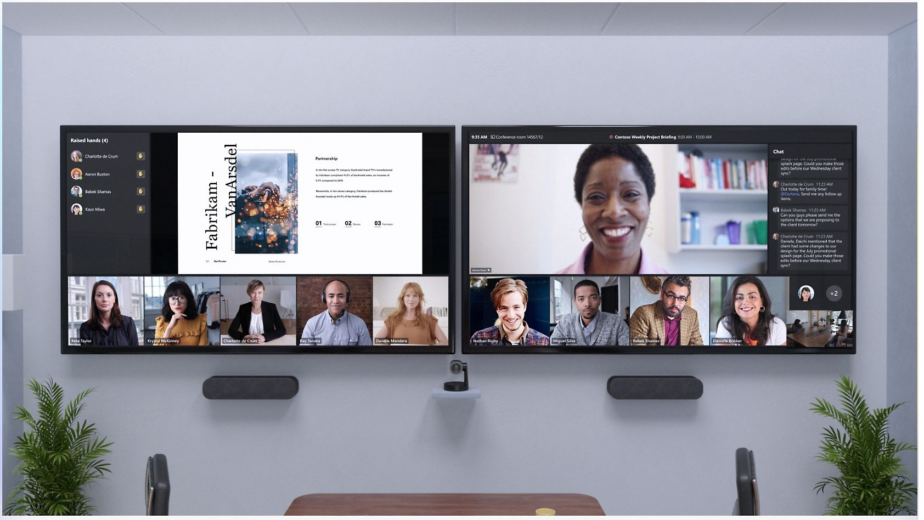As more organizations embrace the benefits of remote work, the traditional 9-to-5 office job is becoming a thing of the past. But with the rise of remote work, another concept has emerged: connected work. Both remote work and connected work enable employees to work from anywhere. But they have some key differences that are important to understand. That’s what we will explore in this article.

Defining connected work and remote work
While remote work has been around for some time, connected work is a relatively new concept. It’s gaining traction as organizations seek to create more agile and flexible work environments.
Remote work refers to the ability for employees to work from anywhere, while connected work refers to the ability for employees to work from any location and connect to the right people and resources at the right time.
Remote work doesn’t necessarily provide employees with the tools they need to connect with the right people and resources for their work. While connected work does focus on the connections that employees have and their ability to access the right resources. This approach relies on technology to facilitate communication and collaboration. It is also a more comprehensive approach to enabling employees to work from anywhere.

Focus of remote and connected work
Remote work is often seen as a solution to the challenges of commuting and maintaining a work-life balance. It allows employees to work from home or from other locations, reducing the time and expense of commuting. Remote work can also be a solution for companies looking to reduce their office space and overhead costs.
However, remote work can also create a sense of disconnection between employees and the company. When employees work from different locations, they may feel isolated and disconnected from the company culture and their colleagues. This can lead to a lack of collaboration, communication, and productivity.
Connected work takes a more holistic approach to remote work. It focuses not only on location but also on the connections that employees have with the company, their colleagues, and the resources they need to do their jobs right. Connected work enables employees to work from anywhere, while still feeling connected to the company culture and their colleagues.

Technology and tools
Both connected work and remote work rely heavily on technology and tools to enable employees to work from anywhere. However, the specific technologies and the way they are used may differ between the two approaches.
Remote work technology and its purpose
The main purpose of technology in remote work is to enable communication and collaboration with colleagues. Some of the most used technologies for remote work include:
Video conferencing software. It’s hard to imagine remote work without having virtual meetings. Microsoft Teams is one of the most popular software for this purpose, and it has gained immense popularity for remote teams. With features such as virtual backgrounds, file sharing, and real-time collaboration, Teams enables remote teams to always stay in touch with their colleagues, even on the go.
Instant messaging tools. Instant messaging tools like Slack and Microsoft Teams help remote teams communicate quickly and efficiently. These tools allow team members to send messages, share files, and collaborate in real-time, even across different time zones.
Cloud-based project management tools. Apps like Trello and Asana allow remote teams to collaborate on projects, track progress, and manage tasks from anywhere. These tools enable teams to assign tasks, set deadlines, and communicate about projects in a centralized location.
Connected work technology and its purpose
Connected work, on the other hand, not only involves technology for communication and collaboration. It also focuses on technology for connecting employees with the right resources and tools for their work, such as:
Collaboration platforms: Collaboration platforms like Microsoft Teams are essential for connected work. They enable employees to connect with each other, share knowledge, and collaborate on projects. Note how we also mentioned Microsoft Teams as a tool for remote work. The difference here is how the tool is used. Within Microsoft Teams you can connect all the people, data, and apps you use daily, making it a central location for collaboration. You can upload and share all your documentation, create document libraries, connect your task management tools and 3rd party apps with ease. Using it in that way shows that the organization is leveraging Teams for connected work.
Artificial intelligence: Artificial intelligence is becoming increasingly important for connected work. AI-powered tools like chatbots can help employees quickly find the information they need, without having to spend time searching through different systems. AI-powered virtual assistants can also help employees manage their tasks and schedule, freeing up more time for productive work. Microsoft Teams is already offering various AI-powered features for their users and we can expect more to come in the near future.
Culture and work environment
Another key difference between remote work and connected work is the cultural and environmental aspects. Remote work requires a shift in company culture to support employees working from different locations. In contrast, connected work requires a broader cultural shift to support a more flexible and agile way of working.
Remote work can pose a challenge for company culture because employees are physically disconnected from their colleagues. That can lead to feelings of isolation and disconnection. To address this, companies may need to find ways to foster a sense of community among remote worker. That can be regular virtual team meetings, tools that encourage social interaction, or occasional team offsites.
Connected work, on the other hand, requires a cultural shift towards a more dynamic and agile work environment. This means that employees need to be comfortable with change and able to quickly adapt to new technologies and work processes. It also requires a greater emphasis on communication and collaboration, both within teams and across departments.
To foster a culture of connected work, companies can invest in training programs to help employees develop the required skills. This may involve training on how to use specific tools and technologies, as well as training on soft skills such as effective communication and problem-solving.
In terms of work environment, remote work requires employees to set up their own workspace and manage their own work schedule. This can lead to greater flexibility and work-life balance, but it also requires a certain level of self-discipline and organization.
Meanwhile connected work requires a more structured and collaborative work environment. This may involve using shared workspaces or collaboration tools to facilitate communication and teamwork. It also requires a greater focus on project management and task delegation, as teams may be working on multiple projects simultaneously.

Benefits and challenges
Benefits of connected work
Improved collaboration and communication. With connected work approach, employees can access the right resources and tools at the right time, which can improve collaboration and communication among team members.
Better work-life balance. Connected work can enable employees to work from anywhere, promoting a better work-life balance and increased job satisfaction.
Increased productivity. Some of the barriers that can slow down your work, such as a lack of access to necessary resources or a dependence on physical proximity are no longer an issue.
Challenges of connected work
Requires a cultural shift. Connected work can require a significant cultural shift to support a more flexible and agile way of working, which may not be easy for some organizations to implement.
Technology and infrastructure. Organizations need reliable technology and infrastructure to ensure employees can access the necessary resources and tools, which can be challenging.
Potential for burnout: Connected work can make it difficult for employees to disconnect from work, leading to potential burnout and decreased job satisfaction.
Benefits of remote work
Increased flexibility. Similar to connected work, remote work provides employees with increased flexibility and the ability to work from anywhere.
Access to a broader talent pool. By choosing the remote working model, organizations can hire from a wider geographic area, allowing them to access a broader talent pool.
Reduced overhead costs: Remote work can help organizations reduce overhead costs, such as office space and utilities.
Challenges of remote work
Communication and collaboration barriers. Communication and collaboration among team members can be a challenge, especially if reliable technology and tools are not available.
Isolation and loneliness: Remote work can lead to isolation and loneliness, which can impact job satisfaction and overall well-being.
Potential for work-life imbalance. It may be difficult for employees to disconnect from work, leading to potential work-life imbalance and burnout.
The benefits and challenges of connected work and remote work will depend on the specific needs and goals of your organization, as well as the resources and infrastructure available.

Why it’s no longer a choice between connected and remote work
In the past, the choice between remote work and connected work might have seemed like a binary decision for organizations. However, with the rise of technology and the increasing need for agility and flexibility, it doesn’t really make sense to choose one over the other anymore.
The truth is that remote work and connected work are not mutually exclusive. In fact, they can and should coexist in today’s workplace. It’s no longer enough to simply allow employees to work from home or any location they choose. They also need to be able to connect with the right people and resources to do their jobs effectively.
The shift towards connected work is already happening. The number of organizations implementing connected workspaces is increasing, even among those that support fully remote work. According to Gartner forecasts, 39% of global knowledge workers will work hybrid by the end of 2023.
Furthermore, the benefits of connected work go beyond just productivity and collaboration. It also allows for greater employee satisfaction, as they have more flexibility and autonomy in their work. Moreover, it leads to cost savings for organizations, as they no longer need to invest in expensive office spaces and can access a wider talent pool.
So, instead of choosing between remote work and connected work, organizations should focus on integrating both approaches into their work culture. This requires a shift in mindset and a commitment to providing employees with the technology and tools they need to connect with each other and with the resources they need to do their jobs effectively.
